DARPA is looking for a "biological" way to restore concrete
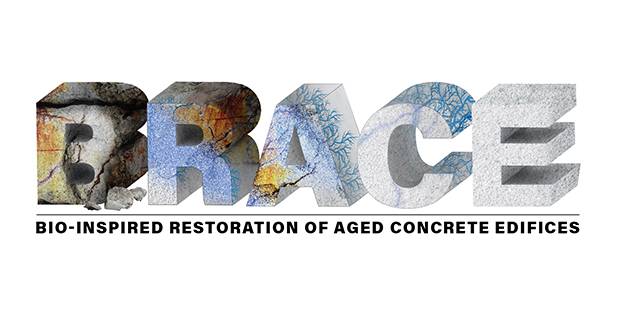
The BRACE program logo shows the concrete restoration sequence
The American Advanced Development Agency (DARPA) has taken up issues of restoring and maintaining the infrastructure. Since last year, work has been underway on the BRACE program, during which they plan to find fundamentally new ways to restore and repair concrete and reinforced concrete structures. We consider "biological" technologies that can solve the problem without the need to dismantle structures or replace its elements.
The problem of degradation
Concrete and reinforced concrete are among the main modern building materials and are widely used in the construction of military and civilian infrastructure. However, for all their advantages, they can degrade with negative consequences.
Under the influence of external factors, as well as due to incorrect composition, non-compliance with construction technologies, etc. cracks appear in the concrete, and then it begins to crumble. External moisture leads to corrosion of metal elements, which reduces the strength of the structure, and also creates additional internal stresses. The strength of the structure gradually decreases, up to its complete destruction.
According to the DARPA agency, by now the US armed forces are fully faced with the problem of degradation of concrete structures. A lot of objects for various purposes, built in the middle of the XNUMXth century, remain in operation. Due to age and external factors, their condition leaves much to be desired and requires attention.
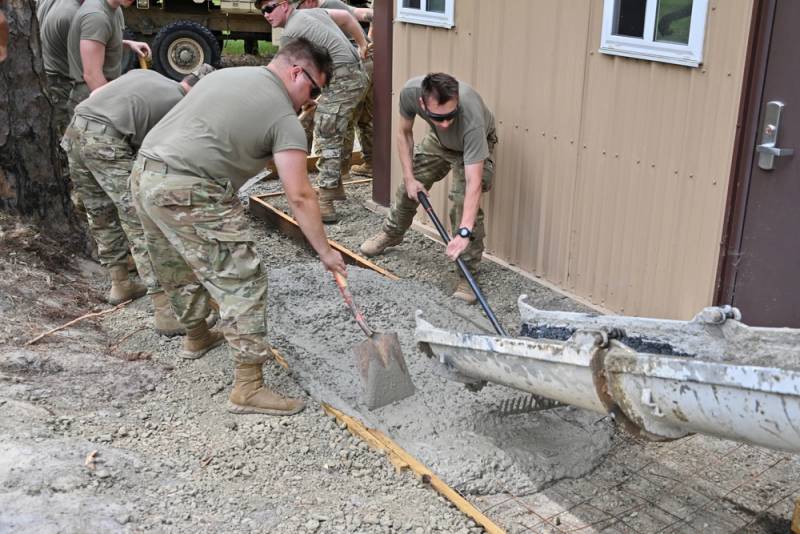
While American military builders have to use "ordinary" concrete
Not all such facilities can or should be repaired or demolished and rebuilt. In this regard, it is proposed to develop new repair technologies that allow restoring the integrity of building materials and structures without significant external impact.
Inspired by nature
In March 2022, DARPA announced the launch of a new research program called Bio-inspired Restoration of Aged Concrete Edifices (“Biologically inspired restoration of old concrete structures”) or BRACE (sounds like “Brace” or “Brace”).
As part of the new program, it is planned to re-examine the processes of degradation and destruction of concrete and reinforced concrete under different conditions and for different times. Based on the information collected, they will try to create a new technology for repairing and / or maintaining the integrity of the structure.
As part of BRACE, DARPA offers an interesting concept for damage recovery. We need some means that can create a network of thin channels in the damaged area or in the thickness of concrete, similar to blood vessels or mycelium. Through this network, materials for repair should be delivered to the damaged area in an optimal way. Once in the right area, the particles of the material will be embedded in the existing structure and strengthen it.
In repair mode, the canal network will have to ensure that a large amount of building material is quickly delivered to the damaged area to fill the resulting voids. Prevention will consist in similarly filling small defects before they increase and begin to pose a threat. In addition, DARPA would like to use a network of channels for material diagnostics and damage signaling.
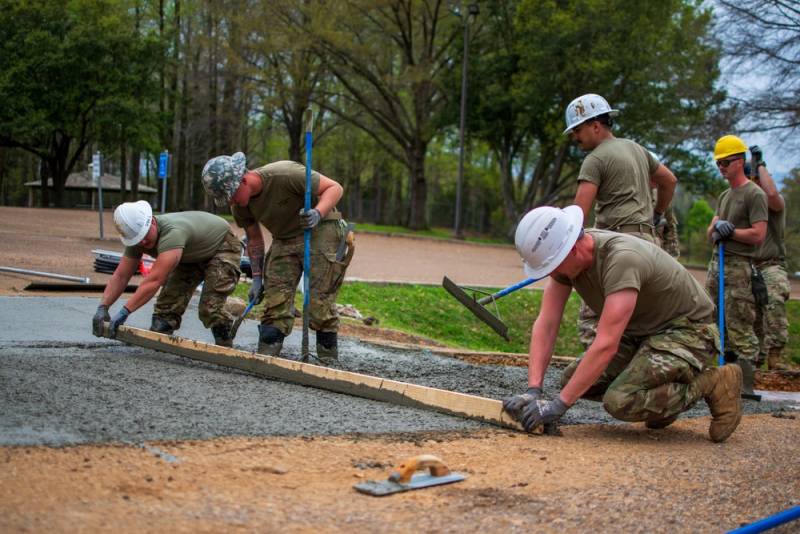
How exactly the channels will be created is to be determined by the organizations participating in the program. It is possible to use certain chemical, biological and other means. At the same time, the cross section and configuration of the network of "vessels" should not adversely affect the strength of the restored structure, which is already weakened.
The program is divided into two so-called. technical areas (Technical Areas) that have similar but different goals. The task of the first "area" TA1 is the actual creation of a new technology. As part of the TA2 direction, methods for using new tools will be developed, as well as test systems and models for verification. In the future, a new task will appear - it is necessary to develop a high-speed version of the technology. With its help, they plan to repair minor damage to buildings, airfields, etc.
The BRACE program started in March last year and has four and a half years to complete. This means that new technologies should appear before the end of FY 2026. The timing of the appearance of new materials in engineering and building structures cannot yet be named. In the indefinite future, the transfer of new developments to the civilian sphere is not ruled out, where they will also find wide application.
Researchers and performers
A year ago, DARPA launched the BRACE program, and also opened a call for applications from organizations wishing to participate in it. On March 23, 2023, the agency announced the completion of the preparatory part of the program and the selection of its participants.
Three American organizations will be engaged in the full development of new technologies. This is the Livermore National Laboratory. E. Lawrence, University of Colorado and Battel Memorial Institute. They presented their own ideas and developments on the "biological" restoration of concrete.
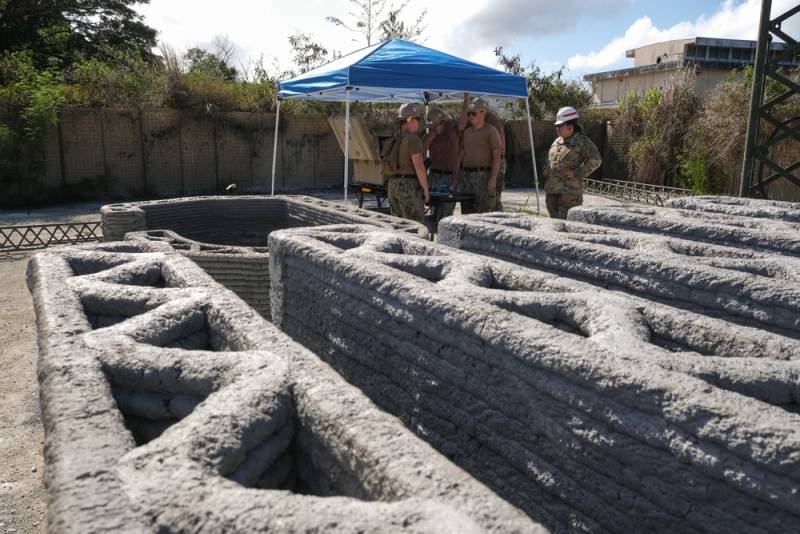
XNUMXD printing of a cement mortar building
Unfortunately, the details of preliminary projects from BRACE member organizations have not yet been announced. Official reports mention that they all meet the basic requirements of the customer and are based on the idea of a network of channels within the material. In this case, the general concept can be implemented in different ways.
According to DARPA, all three participants in the program will work in both "technical areas". They will have to develop new technologies, as well as adapt them for practical use. A set of measures and means for testing will also be created by the participants.
Applications
The main phase of the BRACE program has just begun, and its results will have to wait for several more years. In addition, there are no guarantees yet that the research participants will cope with the tasks. However, the DARPA agency already indicates the possible areas of application of new technologies and the expected effect.
The Pentagon has at its disposal a mass of military infrastructure of various kinds, in the construction of which concrete and reinforced concrete were used. These are various buildings and structures, airfield runways, port berths and even silo launchers for strategic missiles. A significant proportion of these concrete/reinforced concrete structures were built in the distant past and are gradually deteriorating.
With the help of the developed tools, in the future they plan to repair damaged objects and their elements. In addition, their use at the construction stage is not excluded, which will prevent further degradation of structures. As a result, old facilities will be able to stay in operation longer, and newly built ones will initially have an increased resource. In both cases, there will be known savings.
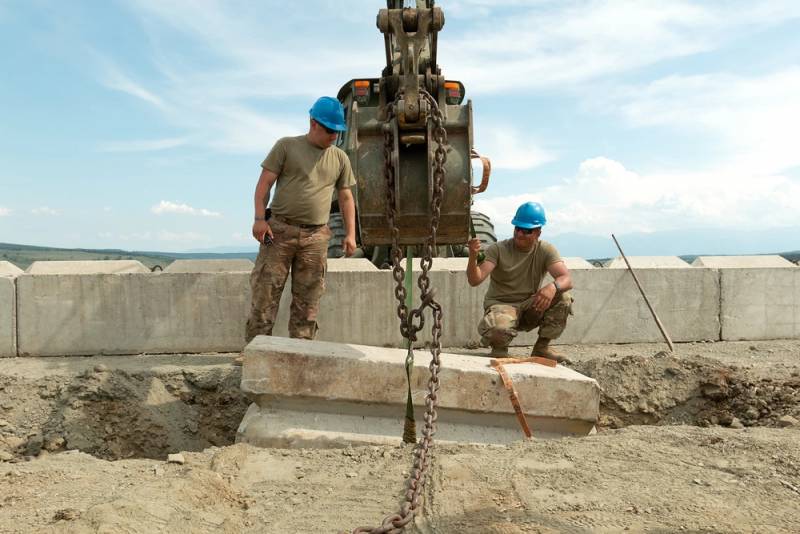
It is also planned to create funds for quick repairs. With their help, they are going to deal with combat damage to airfields and various buildings. This application imposes special requirements on the means of repair, but provides obvious advantages.
In the future, BRACE technologies will be able to move into the civilian and dual-use areas. Concrete structures are used almost everywhere, incl. on objects of critical importance. The introduction of promising means of repair and prevention will allow relatively quickly and at minimal cost to restore damaged facilities and structures, as well as to prolong their operation. In addition, it will be possible to quickly repair with almost complete restoration of strength.
Obviously, new technologies from DARPA and contractors will definitely find their customers in the civilian sphere. Recently, the US has experienced serious infrastructure problems. For a number of reasons, the wear and tear of various objects in the field of transport, energy, industry, etc. does not receive due attention. Prevention is not carried out in full, which leads to various accidents. It is possible that the emergence and widespread use of BRACE technologies will reduce such risks, although it will not completely eliminate them.
Difficult tasks
Thus, the DARPA agency is launching full-scale studies as part of another promising dual-use program. The goal of the BRACE program is to create fundamentally new technologies in the field of materials science and construction. If the participants in the program do their job, then the US military and civilian construction workers will have new special opportunities.
However, the BRACE members face very difficult tasks. They will have to find tools with special functions and capabilities, as well as ensure their application in practice. Whether it will be possible to obtain all the desired results will become known in a few years. In the meantime, the Pentagon will have to carry out repairs in the usual way or demolish and rebuild facilities - with all the costs of time and money.
- Ryabov Kirill
- The US Department of Defense
Information